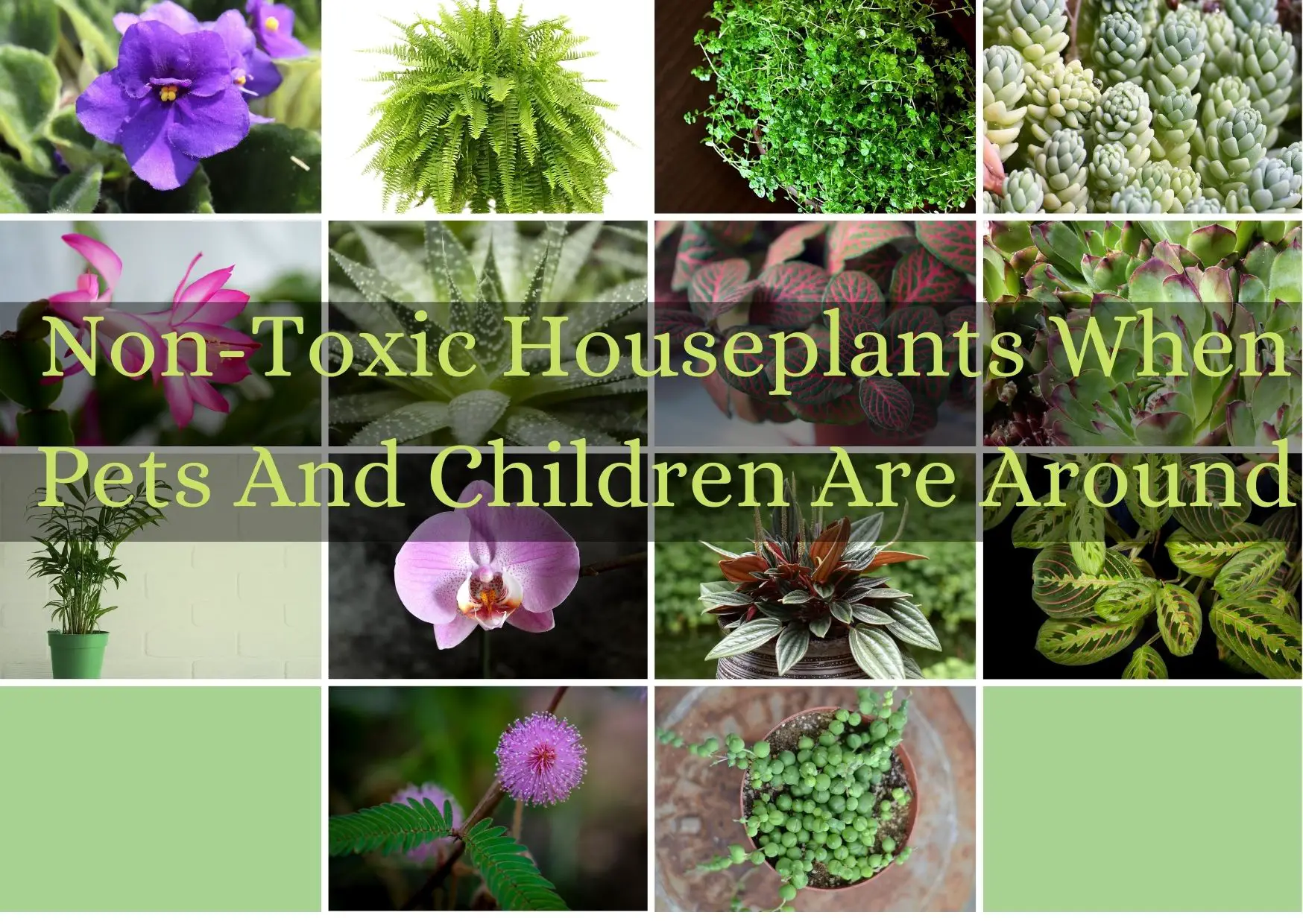Last Updated on April 8, 2024 by Real Men Sow
Some house plants can be completely safe for pets and people, others can cause serious illness to animals and humans. Cats especially love to floss their teeth on the fronds. It doesn’t matter if you have curious kids or pets that love to chew on your houseplants.
List of Toxic Houseplants To Keep Children and Pets Away
While we want to focus on non-toxic plants, we thought we should mention a few common indoor plants that are poisonous and could make your family members sick. If you have these plants in your house, place them well out of reach of little hands and paws.
- Arrowhead Vine
- Caladium (Also called Elephants Ears, Pink Cloud, and Mother-in-Law Plant, angel wings, or heart of Jesus)
- Dieffenbachia
- English Ivy
- Hyacinth
- Lilies (cause kidney failure in cats, do not let them sniff the pollen or chew on any lilies)
- Pothos
- Philodendron
- Snake Plant (also called Mother-in-Law’s Tongue)
Best Non-Toxic Houseplants
Don’t be discouraged if you find some houseplants toxic. These 15 houseplants are safe for children, pets, and dogs. While they shouldn’t be allowed to go on a plant-munching adventure, they should still eat a few of these.
African Violet
This beautiful bloomer will be happy if you keep it in a container about 1/3 its size, let it absorb water from the bottom, and fertilize it regularly with African Violet fertilizer. The leaves are delicate and should not be wet.
Baby’s Tears
Baby’s Tears like a large, shallow pot that can be spread out and draped over the edges. It should be kept out of direct sunlight.
Boston Fern (also called Sword Fern)
Boston ferns prefer a cool environment between 6 and 75°F with plenty of humidity. It needs more humidity if its fronds turn yellow. Misting may also be necessary every day in the fall or winter.
Burro’s Tail
Burro’s tail is another succulent that loves to trail over its pot. It looks great in hanging planters.
Christmas Cactus (or Easter or Thanksgiving Cactus)
They have unusually shaped flowers and come in a variety of colors. You can get them to flower for the holidays by reducing your watering schedule 6-8 weeks in advance. Before watering, wait until the soil has dried to the top.
Fittonia
Fittonia, also known as Nerve Plant, is a striking contrast to other houseplants. Its distinctive white and green leaves are quite different from the others. It prefers moist soil so make sure to check it often. Fittonia might need watering twice per week in winter and fall.
Haworthia Pearl Plant
This aloe-lookalike is a great non-toxic option. This succulent is a common one and can tolerate some sun. It will also appreciate the ability for the soil to dry out a little between waterings.
Hens and chicks
Chicks and hens like dry and warm conditions. They will spread their little babies and fill their pots with them. There are many different colors and textures available for hens and chicks.
Parlor Palm
Parlor Palms, also known as Neanthe Bella Palm, are another humidity-loving palm. They should be misted regularly, and kept out of direct sunlight. However, they love bright indirect light.
Peperomia
Peperomia is easy to take care of, but they do prefer to be away from a window. Its leaves can burn if they are exposed to direct sunlight. Your peperomia should be watered when the soil is dry to the top.
Phalaenopsis Orchids
Phalaenopsis orchids or moth orchids are among the most popular orchids. Although orchids can seem finicky, they prefer consistent care. To keep orchids happy, water phals regularly and place them in indirect sunlight.
Prayer Plant
Another low-light, easy-care option is the Prayer Plant. They don’t like direct sunlight and can tolerate inconsistent or random watering schedules quite well. But they like humidity so make sure to mist them often.
Sensitive Plant
These plants can tolerate direct sunlight, but prefer their soil to remain moist and not soggy. Because they are sensitive, children love them because they respond so quickly to touch.
Spider Plants
Spider plants are known for being resilient. This plant may appeal to cats because they look a bit like catnip. You can let your cat chew on the spider plants, but if they refuse to leave it alone or if it is in pain, hang it up.
String of Pearls
This succulent is a unique one because it loves heat and sunshine. This succulent prefers dry soil so don’t let it sit in water. It likes to run along the edges of its containers, so allow it to roam.
Why should you use hanging baskets for houseplants?
Many common houseplants can be toxic to animals and humans. And for adults like us, it doesn’t matter if a houseplant is toxic. However, if you have cats who are determined to eat it, you don’t exactly need to throw them out. Hanging baskets, high shelves, and supervision are all ways to keep toxic greenery away from curious hands and mouths.

